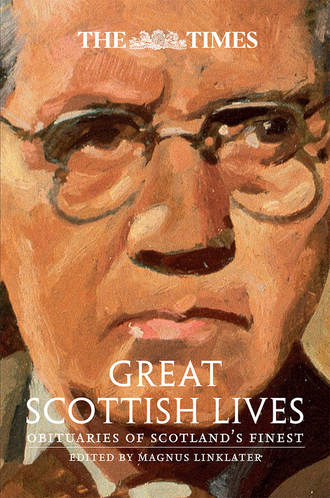The Times Great Scottish Lives: Obituaries of Scotland’s Finest

Полная версия
The Times Great Scottish Lives: Obituaries of Scotland’s Finest
Язык: Английский
Год издания: 2018
Добавлена:
Настройки чтения
Размер шрифта
Высота строк
Поля
Конец ознакомительного фрагмента
Купить и скачать всю книгу

